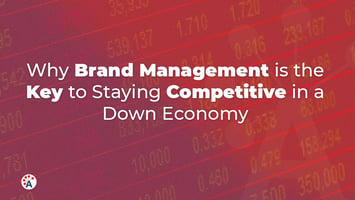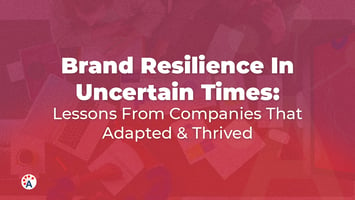As we pass by the mid-year mark, businesses and business professionals around the world and across...
Planning Ahead: How Product Managers Can Prepare For 2026
We’re at the tail-end of 2025, and the question every forward-thinking product manager is asking is how to best prepare for 2026. The rapidly evolving technology landscape, driven by AI and other tools, shifting consumer behaviors and spending, along with market uncertainty, demands a strategic approach to product management for 2026. Overall, the world’s economic growth is predicted to weaken both at the end of this year and through 2026 as demand and investments fall in response to tariffs and worldwide tensions, according to Morgan Stanley. For our United States product managers, the spending behaviors of local consumers are even more tepid. 50% of consumers said they expect to delay purchasing in discretionary categories, and only 40% expressed that they expect to make no change to spending on essentials, McKinsey & Company reports.
That’s why we’ve developed a product management roadmap for strategic planning in the new year. This roadmap will equip you with the essentials you need to begin your 2026 plan. If you want even more support in developing strategic planning skills, we encourage you to explore our globally recognized Certified Product Manager® program. Now, without further ado, let’s dive into our strategic planning roadmap for the coming year.

Key Drivers To Keep Your Eyes On For 2026
This is the most volatile part of the entire roadmap. During your 2026 planning, we recommend revisiting these driving forces regularly, as new information may emerge that will impact the rest of your 2026 plans. What are these impactful forces for 2026? We’ll briefly list them below.
- Artificial intelligence and its broad use in all professions, and its integration across all product categories.
- Sustainability and environmental impact considerations. Current data from the World Meteorological Organization suggests that 2026 will likely continue the trend of intensifying climate impacts, characterized by above-normal storm activity and persistent drought conditions.
- Privacy-first design requirements and data governance. With new privacy laws rolling out in the UK and EU, more countries are expected to follow suit.
- Economic uncertainty is driving value-focused development. If you’d like the regional economic outlook for Asia/Pacific, Europe, the Middle East / Central Asia, Sub-Saharan Africa, or the Western Hemisphere, explore the reports by the IMF.

Develop A Resilient Product Portfolio For 2026
Now, let’s address the elephant in the room: market uncertainty. Besides establishing metrics that will provide early warning signals to market trouble, there are other ways to handle a turbulent market. Today, we’ll cover three key strategies for weathering uncertainty.
- Portfolio Diversification: Modern product managers dealing with shaky markets must approach portfolio planning with the same rigor as investment managers. What does this mean for product managers when building their 2026 product portfolio? It means they must balance high-risk, high-reward initiatives with stable, revenue-generating products. Here’s the general mix we recommend, but you’ll want to tailor it to your specific industry.
- Core products (70%): Established offerings that generate consistent revenue. This is a stable and safe bet when times are uncertain.
- Adjacent opportunities (20%): Extensions of existing products into new markets. While it carries some risk, this approach is built on stable products, thereby increasing its likelihood of success.
- Transformational bets (10%): Innovative solutions that could redefine your market. These are high-risk opportunities that could be essential to your growth during market turmoil. We recommend keeping this low as the risk of failure can be high.
- Scenario-Based Planning: Rather than creating a single roadmap, develop multiple scenarios based on different market conditions. This approach will allow you to pivot quickly if circumstances change. Here are a few scenarios you can plan around to get you started.
- Best-case growth scenarios. (Here’s hoping!)
- Economic downturn contingencies. If the market gets worse, what will you, as a product manager, do?
- Technology disruption responses. What will the product management profession look like with the growth of AI? What will your industry look like with AI and other tech advances?
- Competitive threat mitigation. If a new competitor emerges, what will you do to compete with them?
- Resource Allocation Framework: Implement a dynamic resource allocation model that can adapt to changing priorities while maintaining strategic focus. This will require clear criteria for investment decisions and regular portfolio reviews.
The Secret To Adapting To Whatever 2026 Has In Store
We don’t know exactly what 2026 will bring, but we do know that there is something foundational you can do today to prepare for tomorrow. That is to build learning into your process. What does learning look like in the product management process? It’s rapid experimentation cycles, customer feedback integration loops, market intelligence gathering systems, and cross-functional knowledge sharing protocols. There are systems that you can build right now that can accomplish just that to ensure that you have a consistent and accurate pulse on the future.
That’s not all you can do. Are you personally and professionally ready for the challenges 2026 may bring as a product manager? The most successful product managers view their role as one that continuously evolves. While 2026 planning is essential, skilled product managers ensure that they personally have the foundational knowledge, strategic analytic skills, and recognition that create long-term competitive advantages. That’s where our Certified Product Manager® program can help.
Not only have these credentials from the Certified Product Manager® become synonymous with a commitment to excellence and a way to demonstrate dedication to the profession worldwide, but they are also essential in strengthening your knowledge of product management in today’s world. They’ll equip you with the critical and analytical skills you need to navigate market uncertainty both now and in the future, successfully! These courses are available worldwide, spanning from Europe to India, the Middle East, and beyond. With in-person and online courses available, you can pursue the course that works best for your schedule. Get ready for 2026, it’ll be here before you know it.
Sources
Morgan Stanley. (2025). Economic outlook midyear 2025. Morgan Stanley Insights. https://www.morganstanley.com/insights/articles/economic-outlook-midyear-2025
McKinsey & Company. (2025). The state of the US consumer. McKinsey & Company. https://www.mckinsey.com/industries/consumer-packaged-goods/our-insights/the-state-of-the-us-consumer
International Monetary Fund. (n.d.). Regional economic outlook. IMF Publications. https://www.imf.org/en/Publications/REO
World Meteorological Organization. (2025, May 26). Global climate predictions show temperatures expected to remain at or near record levels in coming 5 years. WMO News. https://wmo.int/news/media-centre/global-climate-predictions-show-temperatures-expected-remain-or-near-record-levels-coming-5-years




